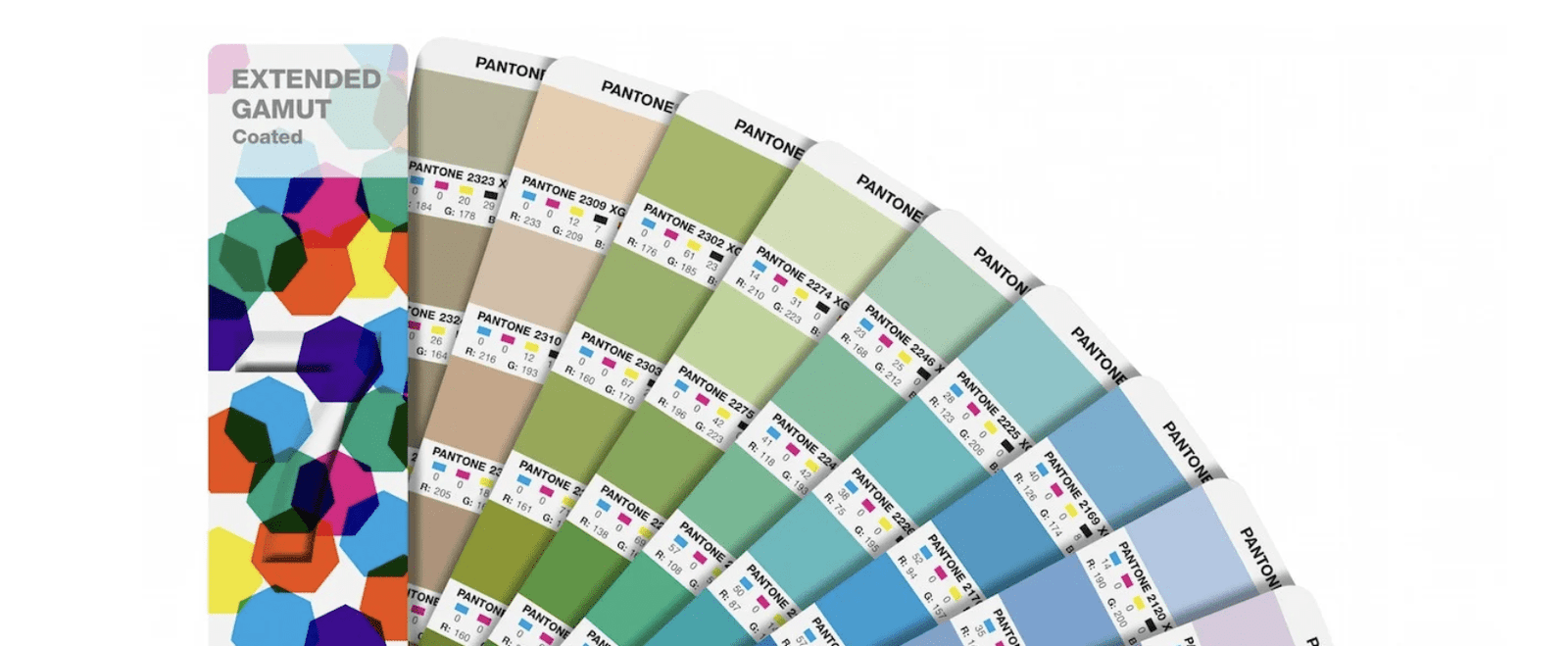February 9, 2024
How to increase your productivity, reduce press downtime for higher profitability in Flexographic printing.
Printing with an expanded gamut or extended gamut means that the packaging is NOT printed with a combination of CMYK and specialty inks.
To quickly summarize; Extended Gamut is one of the latest advances in polychromatic printing technology that achieves 90% more accurate Pantone spot colors than CMYK by adding orange, green and violet to the color gamut.
Although CMYK printing is theoretically capable of printing a wide range of colors, in practice printers need other colors as reinforcement to achieve this. Therefore, it is common not to achieve the desired saturation especially in purples, oranges, etc. by printing duller colors and grays.
Extended Color Gamut (ECG) aims to achieve the maximum possible colors with the same inks, speeding up printing. Many companies around the world successfully use the Extended Color Gamut concept.
However, the process of implementing GEC in a converter is not simple. It is often necessary to modify the way of working, invest, train the equipment, analyze the failures and adjust them. It is common that many mistakes occur until the company reaches the fullness with the concept of the Expanded Color Gamut.
Extended Color Gamut (ECG) printing, also known as fixed color palette printing, uses a standardized ink set that enhances the color space to reproduce any color used in the design. In the complement, up to three additional inks can be used. The inks must be between the CMYK process colors, i.e. red or orange, green and/or blue or violet.
This method allows for a virtually unlimited number of colors in the design and also for nesting print jobs with different color channels, without changing the ink settings of the printing machine.
Using ECG, the design can be more striking, resulting in highly saturated colors. The print result is closer to the original RGB design. Since the ink settings are standardized, printers save on setup and ink costs.
As the profile calculation takes a considerable amount of time, GMG OpenColor calculates the required separation profiles in advance and provides them to the add-in on request via a direct connection.
Separate RGB images to your custom ECG ink configuration with up to 7 output channels.
You can use red or orange, green and blue or violet inks.
To avoid Moiré effects, inks that are used in addition to CMYK will only be used in the respective area of the color space. For example, Orange is only used in the RMYK area. This means that there will be no overprinting between complementary colors such as Cyan and Red or Orange.
To preserve the gray balance, inks used in addition to CMYK are not used in image areas with low saturation.
But in the end, what is the Expanded Color Gamut?
The extended color gamut printing process prints high-quality images and spot colors with up to seven predefined ink colors. Depending on the customer's color requirements and the type of printing used, a fixed set of CMYK inks plus some base colors can replace certain colors or even all spot colors.
The converter gains productivity in low run length and promotional jobs with the same quality of the traditional system. In addition, it is possible to reduce machine cleaning time, set-up time and the amount of special colors in stock, which opens the opportunity to satisfy low run length markets.
The PANTONE colors in the extended color gamut use XGC terminology and today bring 1729 colors. This is an impressive number, as it is possible to produce with seven primary colors (CMYKOGV) 91% of the PANTONE Formula Guide colors.
The extended color gamut can reproduce these colors and use them in grids, check colorimetric qualities and dot gain. The colors thus become more vivid and intense.
How the extended color gamut transforms packaging and label production?
Not only in the printing industry, but in society as a whole, there is a trend towards shorter lead times for production and delivery of materials, concern for sustainability and increasingly stringent demands in terms of quality. The packaging segment is no different. Converters need to give appropriate industrial response to these demands and the form used is not always the most efficient.
The Expanded Gamut, in turn, helps reduce the constant changing of Pantone spot colors between each job. By standardizing the seven color bases, for example, converters reduce ink inventories and produce the most Pantone colors available while using the same ink configuration for each job at the printer.
In digital printing, expanded color gamut is the most widely used option today:
Benefits of extended color gamut
During the period required for full implementation of the expanded color gamut, converters discover the ease of the technology and feedback is always positive.
The benefits can be summarized in four main aspects:
Flexibility.
Only the cylinders or printing sleeves need to be changed. Anilox rollers and inks (in seven printing units) are never interchanged and reproduce a wide range of Pantone colors. Urgent jobs no longer create disturbances in the planned workflow. It is possible to combine different jobs with completely different colors and shapes.
Consistency.
Digital color adjustment by color management software is possible, so that operators' skills in mixing inks and proofing them on the printer are less relevant. Consistency and predictability are guaranteed.
Print quality.
By adding OGV to CMYK separation, it is possible to reproduce vibrant images of fruits, vegetables and landscapes. They stand out on the shelf because of the "3D" visual depth, an additional element of attraction.
Benefit.
More printer uptime means higher production and profitability. Less waste reduces costs. Printing different jobs on the same cliché means fewer clichés created. And far fewer special inks will be stored or wasted.
The implementation process may take a longer time, but the end result of the expanded color gamut is certainly rewarding.



